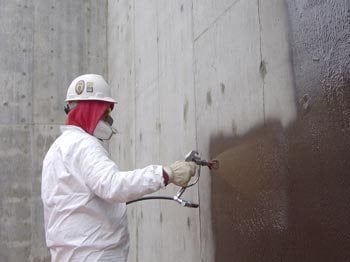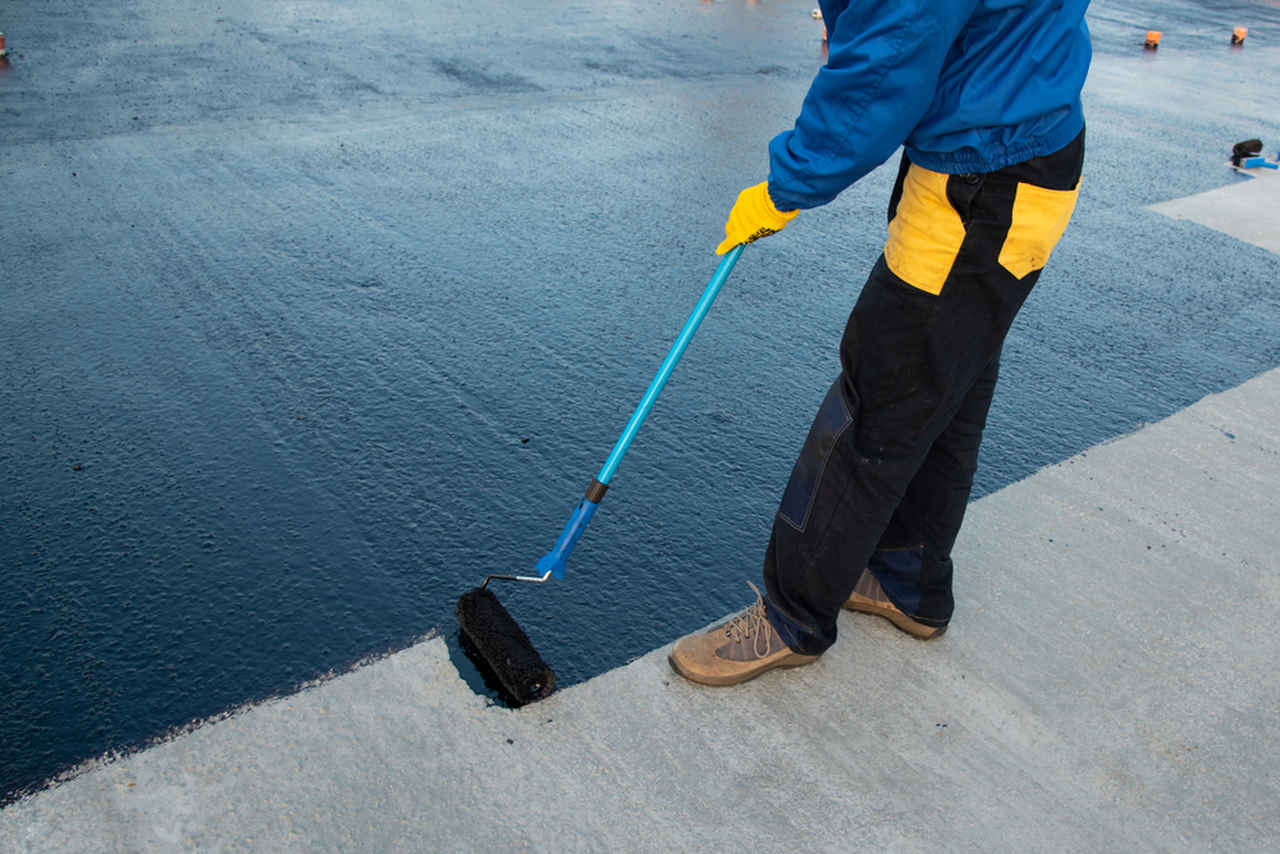Just How Waterproofing Works: A Detailed Consider Methods and Technologies
Waterproofing is necessary for shielding structures from moisture-related damage. It involves various strategies and technologies that produce barriers versus water breach. Conventional techniques, such as compressed clay, exist side-by-side with modern technologies like liquid-applied membranes. Comprehending the subtleties of these techniques is crucial for efficient application. The effectiveness of any type of waterproofing service hinges not just on the strategies utilized yet additionally on ongoing maintenance and examination. What are the crucial aspects that influence lasting efficiency?
Comprehending the Basics of Waterproofing
Waterproofing is an important process that safeguards structures from water invasion, which can result in significant damages with time. This approach entails the application of numerous products and techniques made to produce a barrier against wetness. The primary goal is to stop water from penetrating surfaces, which can create degeneration, mold growth, and structural instability.Various variables affect the option of waterproofing approach, including the sort of structure, its place, and environmental conditions. Comprehending the physics of water motion and the properties of various products is crucial in selecting an efficient waterproofing solution.Effective waterproofing not only safeguards buildings but likewise enhances their longevity and stability. Normally, it is incorporated right into the design stage of building and construction to assure comprehensive protection. As awareness of water-related problems expands, the relevance of recognizing waterproofing basics becomes significantly clear to architects, builders, and home owners alike.
Typical Waterproofing Techniques
Traditional waterproofing methods have actually been made use of for centuries, depending on reliable methods and materials to secure structures from water damage. Among the earliest methods entails the usage of clay, which, when compacted, creates an all-natural obstacle against dampness. Furthermore, asphalt, a sticky, black product originated from oil, has been utilized for its waterproof properties, commonly related to roofings and foundations.Another technique entails the application of lime-based plasters, which offer a breathable layer that enables dampness to get away while stopping water ingress. Thatch roofing, a conventional technique still seen in some cultures, offers excellent waterproofing as a result of its firmly loaded straw layers.Moreover, using stone and brick has projected, as these materials are inherently immune to water when correctly installed. Generally, conventional waterproofing techniques stress the importance of picking appropriate materials and building and construction methods to boost toughness against water invasion.
Modern Waterproofing Technologies
Developments in modern waterproofing innovations have reinvented the means frameworks are protected from water damages. Innovative strategies such as liquid-applied membranes and advanced sealants have enhanced the performance and convenience of waterproofing services. These modern technologies enable for seamless application, lowering the threat of leaks and making sure detailed coverage over complicated surfaces.Moreover, the combination of smart innovations, such as moisture sensors and automated surveillance systems, makes it possible for real-time evaluation of waterproofing performance. This positive approach assists in timely maintenance and minimizes long-lasting fixing costs.Additionally, innovations in spray-applied layers supply quick application and superb bond, adjusting to numerous substratums while providing durable protection. Techniques like polymer-modified systems better enhance adaptability and resilience, making them ideal for diverse environments. Overall, modern waterproofing technologies not only minimize water breach but likewise add to the long life and sustainability of frameworks, marking a considerable change in the sector.
Materials Made Use Of in Waterproofing
The effectiveness of waterproofing options heavily counts on the materials used in their application. Various products are used to develop barriers against water ingress, each with distinct residential or commercial properties fit for different environments. Frequently used products include membrane layers, layers, and sealants.Liquid-applied membranes, usually made from polyurethane or acrylic, create a smooth barrier that adjusts to intricate surfaces. Sheet membranes, generally constructed from rubber or thermoplastic, deal durability and are suitable for bigger locations. In addition, cementitious waterproofing products, made up of cementitious compounds, offer superb adhesion and flexibility.Sealants made from silicone or polyurethane are vital for joints and seams, ensuring comprehensive protection. Furthermore, advanced products, such as geo-composite membrane layers, combine several features, improving performance. In general, the selection of waterproofing products is crucial in attaining long-lasting and efficient water resistance, customized to certain project needs and environmental problems.
Common Applications of Waterproofing
Waterproofing plays an important function in various sectors, guaranteeing the durability and integrity of structures. Typical applications consist of residential remedies that shield homes, business facilities that safeguards businesses, and commercial setups that need robust defense against wetness. Understanding these applications highlights the importance of waterproofing in preserving both security and functionality throughout various atmospheres.
Residential Waterproofing Solutions
Several house owners deal with obstacles with dampness invasion, making efficient domestic waterproofing options essential. Various methods exist to resolve this problem, consisting of inside and exterior waterproofing systems. Inside remedies frequently involve the application of sealers and coverings to basement walls, which assist stop water seepage. Outside techniques typically consist of the installation of drainage systems and water resistant membranes that divert water away from the foundation.Additionally, property owners may take into consideration sump pumps to eliminate water buildup and dehumidifiers to manage moisture degrees. Correct grading and making use of rain gutters additionally play an important function in handling water flow around the home. By carrying out these strategies, home owners can considerably minimize the threat of water damage and mold and mildew growth, making certain a completely dry and safe living environment.

Business Facilities Defense
Reliable waterproofing remedies play an important duty in the defense of industrial framework. Sump pump installation & replacement Omaha. These techniques are essential for guarding structures, parking structures, and bridges from water damages, which can compromise structural stability and bring about costly fixings. Typical applications consist of the installment of membranes, finishings, and sealers that develop obstacles versus moisture infiltration. Locations such as basements, roofings, and outside wall surfaces are usually focused on to assure long life and longevity. Additionally, waterproofing systems can improve power performance by protecting against water-related issues that may result in mold article source growth and wear and tear. By implementing robust waterproofing measures, homeowner can protect their investments and preserve functional efficiency, ultimately contributing to the overall sustainability of business centers
Industrial Applications Introduction
While various industries face unique obstacles, the requirement for dependable waterproofing remedies stays a consistent in industrial applications. Industries such as production, construction, and energy commonly run into atmospheres where moisture exposure can endanger architectural honesty and functional performance. In producing centers, waterproofing is vital for securing equipment and materials from water damages. In building and construction, it safeguards foundations and cellars against groundwater seepage. The energy field depends on waterproofing for the protection of equipment in hydroelectric plants and offshore structures. Furthermore, food processing markets utilize waterproofing to assure health and compliance with safety and security criteria. On the whole, effective waterproofing services are vital for boosting durability, safety and security, and performance across numerous commercial settings.
Upkeep and Durability of Waterproofing Solutions
Waterproofing options are designed to offer long-lasting defense versus dampness invasion, regular upkeep is crucial to guarantee their get more performance and longevity. Regular assessments play a significant function in recognizing prospective issues such as fractures, peeling, or indications of water damages. Resolving these problems quickly can avoid more deterioration and expensive repairs.Additionally, cleaning the surface area of waterproofed areas helps remove dirt and particles that might compromise the honesty of the waterproofing obstacle. It's also suggested to reapply protective finishings or sealers as recommended by manufacturers to preserve suitable efficiency. Environmental variables, such as UV direct exposure and severe climate problems, can impact the life expectancy of waterproofing products, making routine analysis crucial
Frequently Asked Concerns
Can Waterproofing Be Applied in Winter?
The inquiry of applying waterproofing in winter raises worries regarding bond and curing. Numerous products may not carry out at their finest in reduced temperatures, requiring cautious option and consideration of specific standards for efficient application.
The Length Of Time Does Waterproofing Generally Last?
The duration of waterproofing efficiency varies based on materials and environmental factors. Typically, it can last from 5 to 10 years, however normal upkeep and assessments are vital to guarantee peak performance and longevity.
Is Do It Yourself Waterproofing Effective and Safe?
The performance and safety of DIY waterproofing depend on different factors, consisting of worldly top quality more info here and application strategy. While some individuals achieve sufficient results, others may encounter issues that jeopardize long-term security and architectural stability.
What Are the Indicators of Failing Waterproofing?
Indications of failing waterproofing include visible water stains, peeling off paint, mold growth, moldy smells, and moisture in walls or ceilings - Basement waterproofing Omaha. These indications suggest endangered obstacles, demanding prompt examination and possible remediation to avoid further damage
How Do I Select the Right Waterproofing Professional?
